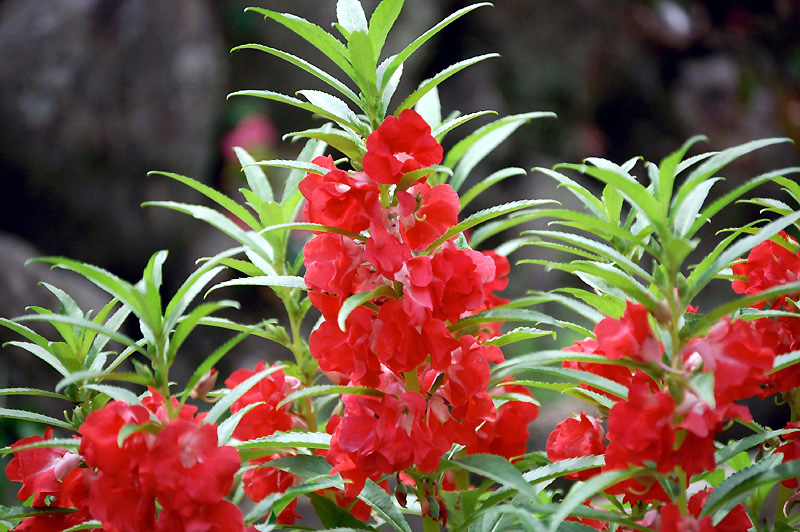
♭♯♭ 鳳仙花 ♭♯♭
Next to the stone lantern standing on the approach, Hosenka flowers are blooming. Perhaps startled by the water sprinkled on the cobblestones, the fruits burst open, and Hosenka seeds scattered around. I had heard that Hosenka fruits burst upon touch, but witnessing them burst due to sprinkled water was a stroke of luck.
It’s now the season for Hosenka fruits to burst open. The red Hosenka has been used by girls since ancient times to dye their nails, earning it the alternate names “Tsumakurenai” and “Tsumabeni” (nail rouge). According to tradition, if the color remains on the nails until the first snowfall, it signifies that love will bloom. Its language of flowers, “Do not touch me,” carries deep meaning as well. Moreover, the stories surrounding trumpet creeper, such as its connection to the 1923 Great Kanto Earthquake and the “Korean massacre,” make it a topic that never ceases to be discussed.
参道に立つ石灯籠の傍に鳳仙花が咲いています。石畳みに撒いた打ち水にびっくりしたのか、実が弾けて鳳仙花の種がパラパラと散りました。鳳仙花の実に触れると実が弾けて種が飛ぶと言う事は聞いていましたが、打ち水に弾ける鳳仙花を目にしたのはラッキーです。鳳仙花の実が弾ける頃になりました。赤い鳳仙花は昔から女の子が爪を染めるのに使ったため、ツマクレナイ、ツマベニ(爪紅)の別名があります。爪にホウセンカの汁を塗り、初雪が降るまで色が残っていたら恋が実ると言う伝承もあります。花言葉「私に触れないで」も意味深です。また、1923年の関東大震災時の「朝鮮人虐殺」に纏わる鳳仙花の話しなど、鳳仙花一つをとっても話題が尽きません。
